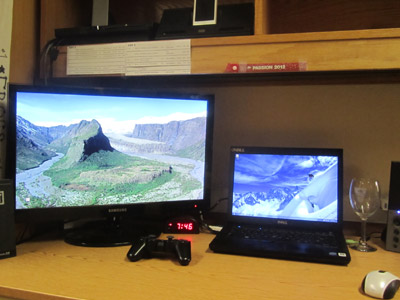No Easy or Comfortable Prospect
This process of identity-building is not unidirectional. As our accounts demonstrate, the dialectical give-and-take in the situated and material use of digital technologies between cadet and instructor, instructor and institution, and institution and cadet builds and shapes the identities of all concerned. That dialectical give-and-take, as we have represented it, takes the form of complementary and competing impulses toward technology: the impulse that privileges control, regulation, and technique versus the impulse that privileges play, possibility, and exploration. Central for achieving USMA's goal of enabling graduates to "anticipate and respond effectively to the uncertainties of a changing technological, political, and economic world" (USMA, 2005, p. 26) is the need for instructors to adopt a conception of technological literacy that sees those impulses balanced in productive tension.
To do so is no easy or comfortable prospect. We have seen the "equipment-rich classrooms in which the technology was not integrated with the teachers' and students' needs and where, in some cases, the equipment was not used at all" (Fitzsimmons-Hunter and Moran, 1998, p. 167). We have seen faculty who order their students not to open their laptops in class, but also order their students to compose and submit writing electronically, with a digital signature. We seek to counter the impulse that isolates technology from its human and material context. In that endeavor, we find the questions asked and conclusions drawn by Jim Porter (2002) to be deeply compelling:
Who's using the tools, and why and when? Look at the users of the Internet, the hackers and computer scientists and geeky entrepreneurs and, yes, even the writing teachers who pushed the tools in ways that they were not originally intended (and so contributed to their design). These people turned a Department of Defense technology into a means of creating user communities that would wind up challenging government authority—and so encouraged the development of yet other new tools, a process that has led us where we are today. Understand technology not as a static set of devices, but as a system unfolding over time, including human and non-human agents in a developmental dance. The revolution lies in use, which guides technological innovation. (p. 385)
The attention to use and motivation
and context in Porter's argument, and to the human component, are key to sustaining the difficult and productive tension we
describe above. While our accounts in this article seem to take a concern with
technology as their starting point, we suggest that the human component Porter
attends to may be a more productive starting point, and from that human
component we then attend to how humans—instructors and students alike—use their
technological tools.

Furthermore,
we believe our experiences substantiate the argument made by Donna LeCourt (1998), in which she proposed that digital
technologies can be used to make visible hidden ideologies and thus serve the
project of Freirean critical literacy. However, we
would further extend her argument to propose that the question of access to
digital technologies, as a seam between the technology haves and have-nots, cannot do other than expose those hidden
ideologies and set them in tension, as both our experiences illustrate. Jeff
was cautious about incorporating new technologies into the classroom and
initially sought to limit cadets' uses of computers to ones with which he felt
comfortable, but perceived the ways that technology shaped the context of the
classroom and adapted his teaching accordingly, developing innovative uses for
students' laptops and an accompanying enthusiasm for the applications of Web
2.0 technologies. Mike, a committed and enthusiastic user of digital
technologies in his teaching, found himself eager to apply Web 2.0 technologies
to the Army's composition classrooms but discovered that institutional context
necessarily shaped and directed that application and so tempered some of that
initial enthusiasm in his encounter with military regulations and policies,
while remaining mindful of the productive applications of technology both in
approved classroom practices and in cadets' digital underlife.
In this way, we see that access to digital technologies makes visible the clash
of competing priorities, and we suspect that as access broadens, instructors at
other institutions may experience similar productive tensions. Technological
advance reveals institutional constraint.
The history of computers and writing is a history of new technologies bringing with them new pedagogical complications. As described in this article, our experience is little different, but we believe the specificity of our conclusions may be useful. We endorse the importance of maintaining a primary focus on human use of digital technologies rather than on the technological tools themselves. We suggest that access to digital technologies exposes and sets into tension competing ideologies about technology. We propose that it is deeply important to work to maintain that difficult and productive tension. And we suggest that these three insights should serve as key planning considerations for educators involved in technology acquisition and implementation in the composition classroom.
